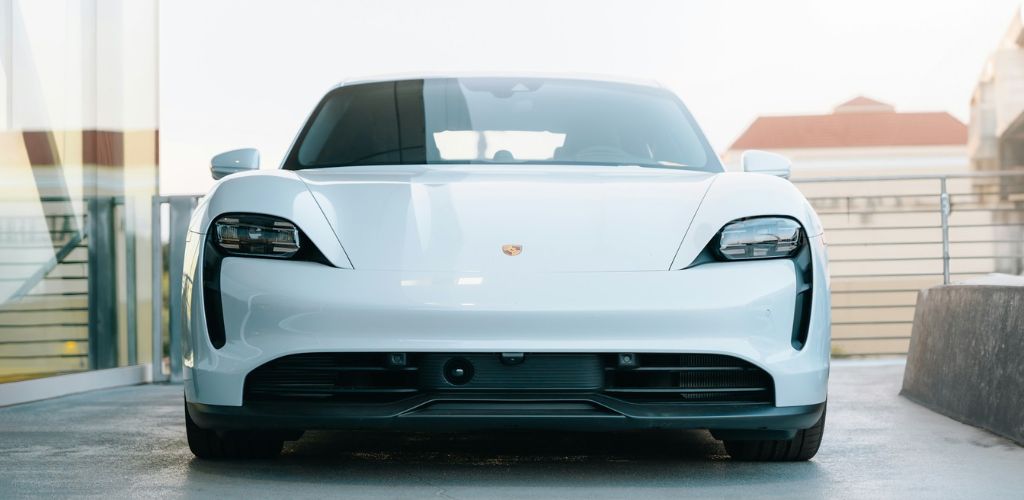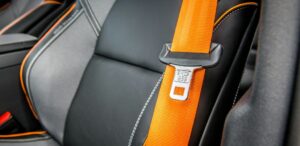When it comes to transportation, the future is already here.
Every few weeks, it seems like new advancements in technology appear. In the automotive industry, that includes autonomous safety features for vehicles like automatic emergency braking systems, adaptive cruise control, and driver monitoring systems, among many other new technologies. But even as autonomous cars are promoted as helpful, time-saving, and safer, concerns surrounding responsibility for accidents have been cropping up.
All those impressive and technologically advanced systems are intended for human safety, but they also create major questions. What happens when self-driving technology malfunctions? What are the legal responsibilities of a driver who uses autonomous technology and gets into an accident? How will this impact your driving and legal future? Your lawyers at García Injury Law are here to shed some light on these developing technologies and how they will influence car accidents.
Negligence vs. Product Liability
Perhaps the largest issue of autonomous vehicle accidents is who is at fault. Negligence would point to the driver at the wheel, though product liability might come into play if the driver expects the autonomous technology to avoid an accident on the road, and the autonomous vehicle makes the wrong “choice.”
Product liability also comes into play with the hardware and software of autonomous technology; one error from those features and the advanced safety technology turns out to be less than safe. Automotive manufacturers may be held liable for crashes that their products make while driving if the high-tech malfunctions.
However, there’s still the issue of the driver of the car who uses that automotive technology and if their negligence — or duty to someone else’s health and safety — comes into play. Drivers are required to be conscious of others on the road and not put themselves or other drivers into unnecessarily dangerous situations with their actions.
We can foresee that the answers to negligence versus product liability will rely on the details of each accident. As it stands right now, many car manufacturers specifically state that their autonomous technology is not to be used without supervision.
Of note, there is no standard for tracking companies’ tests of autonomous vehicles, so there is no way to consider numbers concerning if improvements are being made, if poor tests are being run, or if there are accidents that are narrowly avoided. This makes it difficult for the public to judge whether they feel secure behind a fully autonomous vehicle.
How Will Self-Driving Cars Impact Insurance?
Although the history of self-driving vehicles began over 100 years ago, it is only in the last few years that technology has been speeding up advancements and drawing closer to a self-driving model for individuals. Even though individuals can’t purchase fully autonomous vehicles yet, there are companies that use autonomous vehicles for delivery and semi-autonomous systems available in certain vehicles. As self-driving technology becomes more prevalent, it’s expected that insurance policies will adapt to fit these new inventions.
Because the general public cannot purchase vehicles with high levels of automation, these insurance changes haven’t been implemented as of yet, but newer policies will have to take manufacturing liabilities and cybersecurity concerns into consideration. It may become less popular to consider someone’s previous driving record or location as part of the insurance policy simply because the responsibility could shift to the technology and manufacturers. It’s also possible that pricing may be determined by the cost needed to repair such high-tech features if they’re damaged, which may increase premiums.
With the increase in monitoring technology within cars, insurance companies may also have better insight into vehicle movements, changing the ways claims are viewed. So far, all this is speculation; traditional insurance policies have not changed, but they could shift in the next few decades to accommodate the technological advancements we’re seeing today. It’s important to stay vigilant about ongoing technology so you can make informed decisions about your own vehicles and policies.
Texas Laws About Autonomous Vehicles
Even though fully autonomous vehicles are still being developed, Texas has already set the legal groundwork and passed regulations that allow vehicles to be driven fully autonomously across the state.
As of 2017, cities in Texas are not allowed to regulate autonomous vehicles in any capacity, which has paved the way for quick developments across the state by numerous autonomous companies that use the roadways for testing.
That said, in that same bill, SB 2205, owners are considered to be operators and must ensure that safety measures are followed. Texas’s laws, as they stand, are very lenient in relation to the progression of automation; they lean more toward protecting the development of this technology. As advancements continue, it will be essential to continue to watch for more laws and regulations surrounding self-driving vehicles.
How Do You Determine Liability in an Autonomous Vehicle Crash?
One of the main legal issues that takes the stage with autonomous technologies is responsibility. Who is at fault when those systems malfunction or fail outright? If the person behind the wheel wasn’t the one controlling the car at the time of the crash, then who was responsible? The answers can only be found on a case-by-case basis, as some manufacturers are willing to stand behind their product and take responsibility, while others maintain drivers are still responsible.
Autonomous cars are projected to decrease vehicle accidents; however, because they are still in the very early stages of release, there are still errors in their systems to figure out. As of 2023, drivers are still responsible for vehicle actions. The choice to use autonomous technology as a safety feature still means that drivers need to be paying attention to the road.
If an autonomous system malfunctions, that could be considered product liability, and the manufacturer may be responsible for a defective product. However, there are still many gray areas when it comes to autonomous vehicles, for example:
- Who would be responsible for a cybersecurity hack, as autonomous vehicles are notoriously susceptible to those?
- Will companies bear the brunt of updating security after breaches?
- Who is responsible for a poor judgment call by the system who must make a split-second decision?
These and other questions are on the legal horizon.
Legal Considerations After Being Hit by an Autonomous Vehicle
As stated, it may be difficult to determine who is at fault in an autonomous vehicle crash. If you are in an accident with an autonomous vehicle or with a vehicle whose driver has been using autonomous technology, it’s important to record all the facts surrounding the accident. Take these steps to better protect yourself.
- Whether you’re a pedestrian, bicyclist, or another driver, make sure you document everything that happens. While our lawyers always recommend writing down the specifics of the crash as soon as possible, it’s extremely important to do so in a crash with an autonomous vehicle because the advanced technology will have very detailed records of the accident. Note the road and weather conditions. Write down everything that led up to the accident.
- Visit a doctor as soon as possible so they can record your injuries and keep a record of any medical procedures that you needed after the accident.
- Reach out to witnesses who may have seen the accident.
- Keep a journal of your injuries and pain levels throughout the claims process.
- Contact a trusted legal team to help you sort out the nuances of your personal injury claim and deal with insurance questions.
Because Texas is a comparative negligence state, it’s important that you follow all safety rules and regulations when driving, keeping you physically safe and also protecting your legal claims. Regardless of whether autonomous technology was at fault, your actions could factor into your claim compensation, and if you’re partially responsible, your compensation could be reduced.
When Should I File a Personal Injury Claim for an Accident?
Regardless of who is at fault in an autonomous accident, it is best to start your claim process as soon as possible. For both a product liability case and a personal injury claim, the statute of limitations is two years. This means that after two years, you cannot file a claim or receive compensation relating to that accident, so it’s important to begin as soon as you can. Reaching out to a trusted legal group to help you right after the accident can help you get on your way to receiving your just compensation.
Contact García Injury Law Today
Our legal team is ready to tackle the difficult and concerning questions that these new advancements in automotive technology are presenting. We understand the confusion that autonomous technology brings to the legal table, and we’re here to help you understand your rights and responsibilities through these changing times.
Our car accident lawyers can help you navigate the legal areas that novelty inventions create to keep yourself and your family safer on the road. Whether or not your injuries were caused by an autonomous vehicle system or a negligent driver misusing autonomous technology, you deserve compensation. To begin your claim, contact our attorneys online or call us at 512-474-4487.




